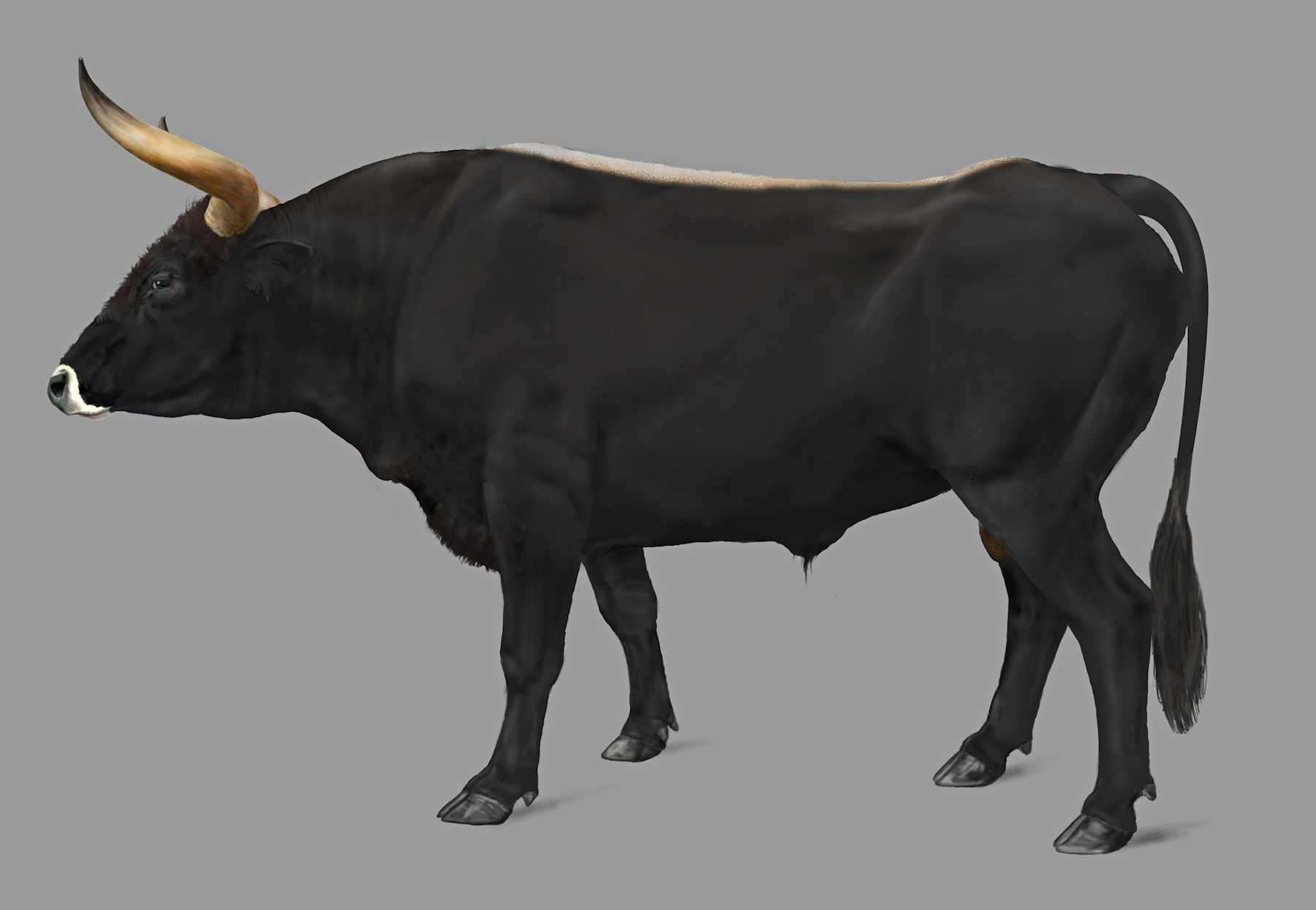
Did you know there were once huge cattle in the United Kingdom and elsewhere in Europe? Tall as a man, weight 3,300 pounds, massive horns. Hunter-Gathers hunted them as a food source using wooden spears with stone tips and domesticated dogs.
Aurochs, (Bos primigenius), also spelled auroch, were extinct wild ox of Europe from which today’s cattle are probably descended. The aurochs was black or dark brown, stood 6 feet high at the shoulder, and had spreading, forward-curving horns.
During the Pliocene era, the colder climate caused an extension of open grassland, which led to the evolution of large grazers, such as wild bovines. The oldest aurochs remains have been dated to about 2 million years ago, in India. During the Pleistocene, the species migrated west into the Middle East (western Asia), as well as to the east. They reached Europe about 270,000 years ago.
Aurochs were still widespread in Europe during the time of the Roman Empire, when they were widely popular as a battle beast in Roman arenas. Excessive hunting began and continued until the species was nearly extinct. By the 13th century, aurochs existed only in small numbers in Eastern Europe, and the hunting of aurochs became a privilege of nobles, and later royal households. The aurochs were not saved from extinction, and the last recorded live aurochs, a female, died in 1627 in the Jaktorów Forest, Poland, from natural causes.
The idea of breeding back the aurochs was first proposed in the 19th century by Feliks Paweł Jarocki. In the 1920s, a first attempt was undertaken by the Heck brothers in Germany with the aim of breeding an effigy (a look-alike) of the aurochs. Starting in the 1990s grazing and rewilding projects brought new impetus to the idea and new breeding-back efforts came underway, this time with the aim of recreating an animal not only with the looks but also with the behavior and the ecological impact of the aurochs, to be able to fill the ecological role of the aurochs. The Arbeitsgemeinschaft Biologischer Umweltschutz, a conservation group in Germany, started to crossbreed Heck cattle with southern-European primitive breeds in 1996, with the goal of increasing the aurochs-likeness of certain Heck cattle herds. These crossbreeds are called Taurus cattle.
